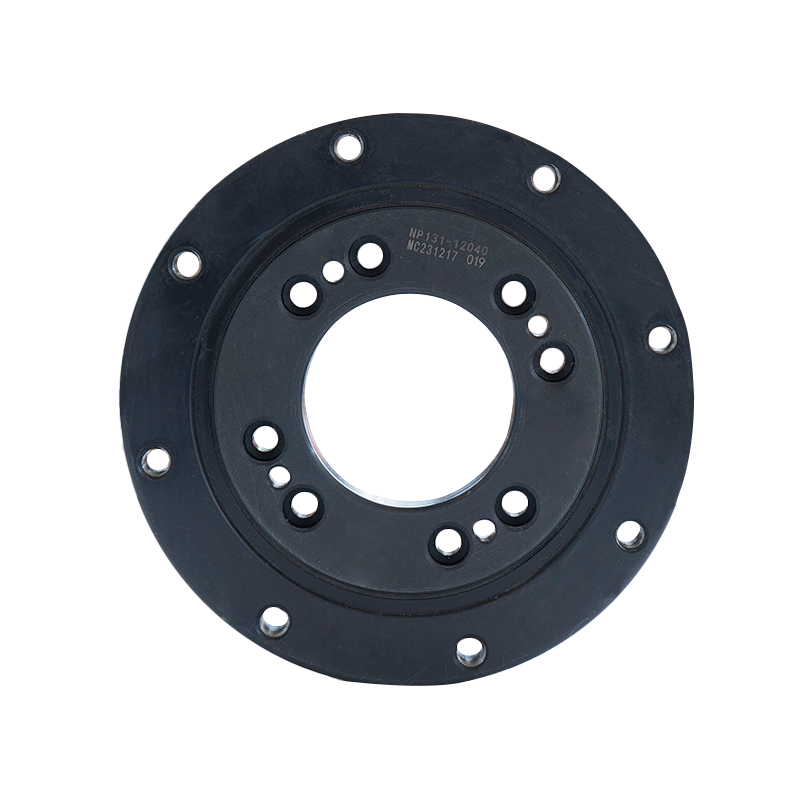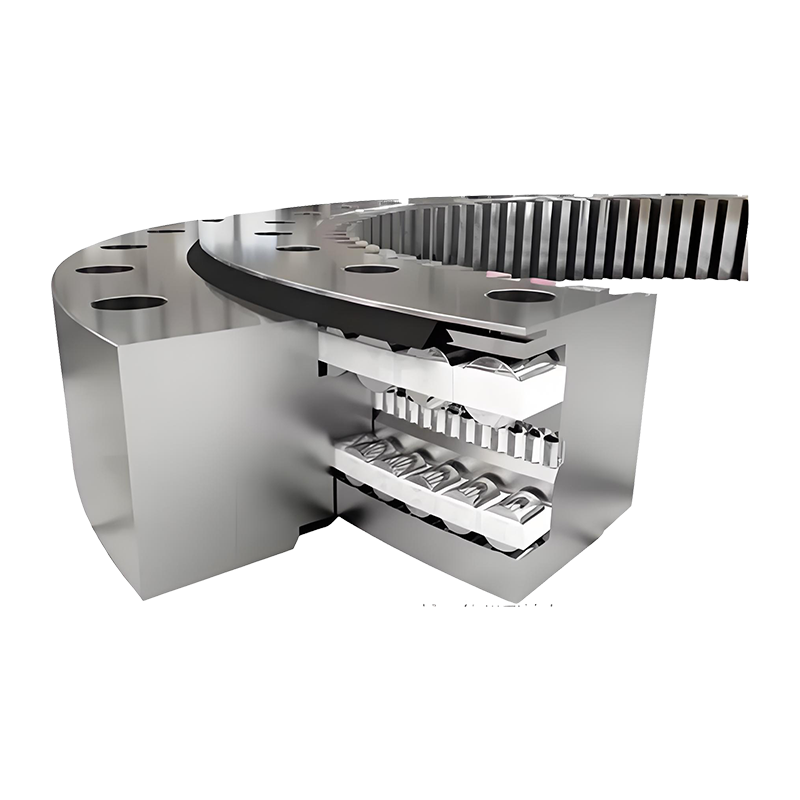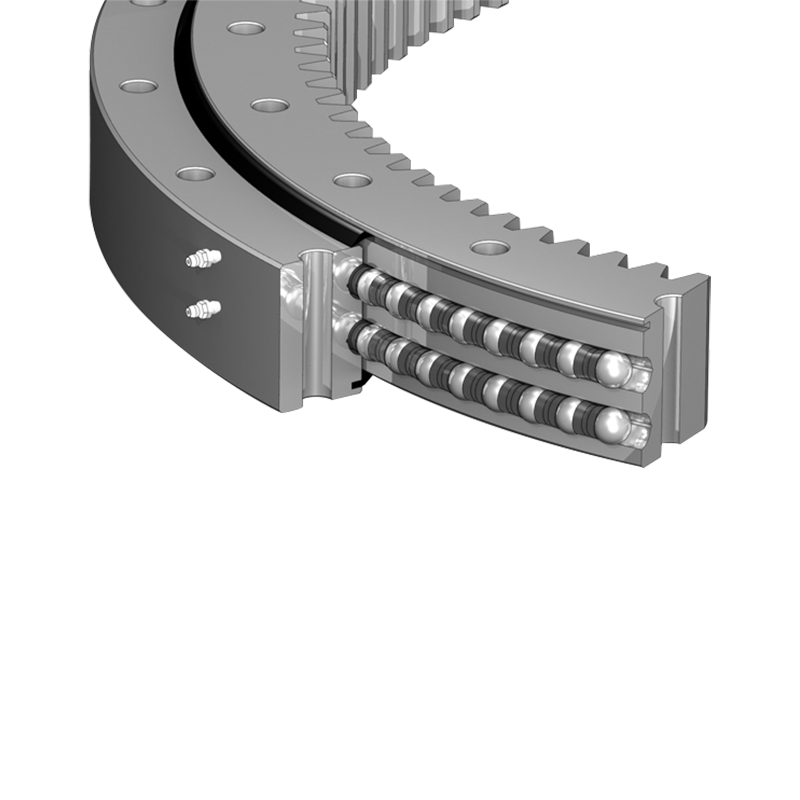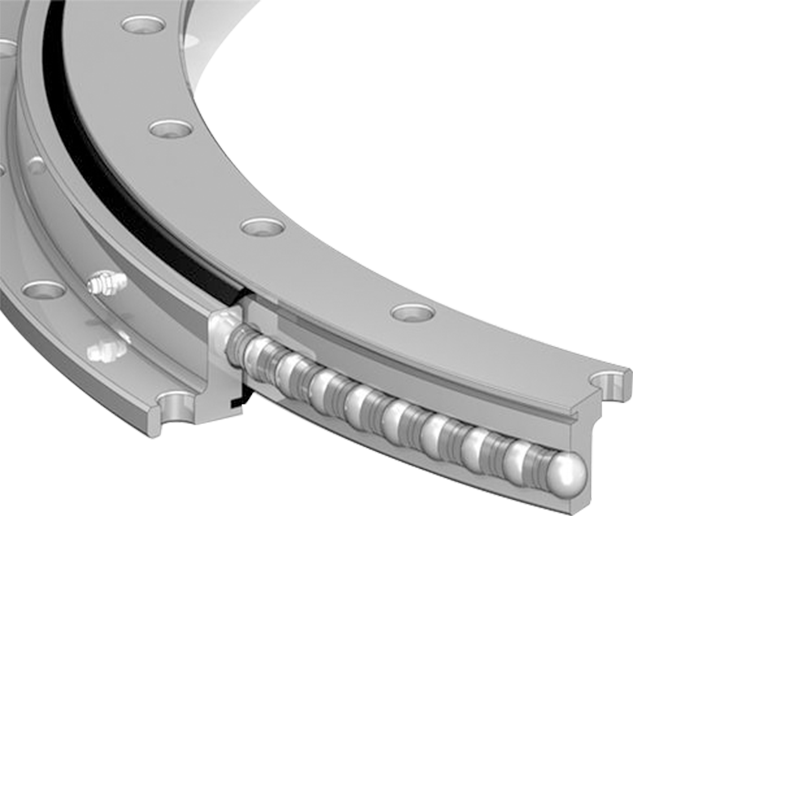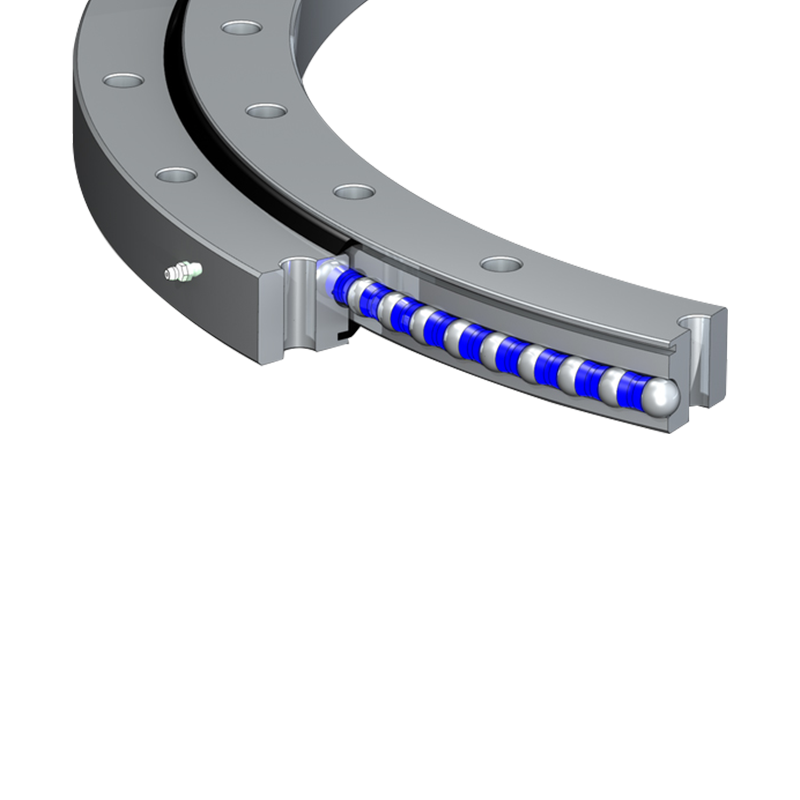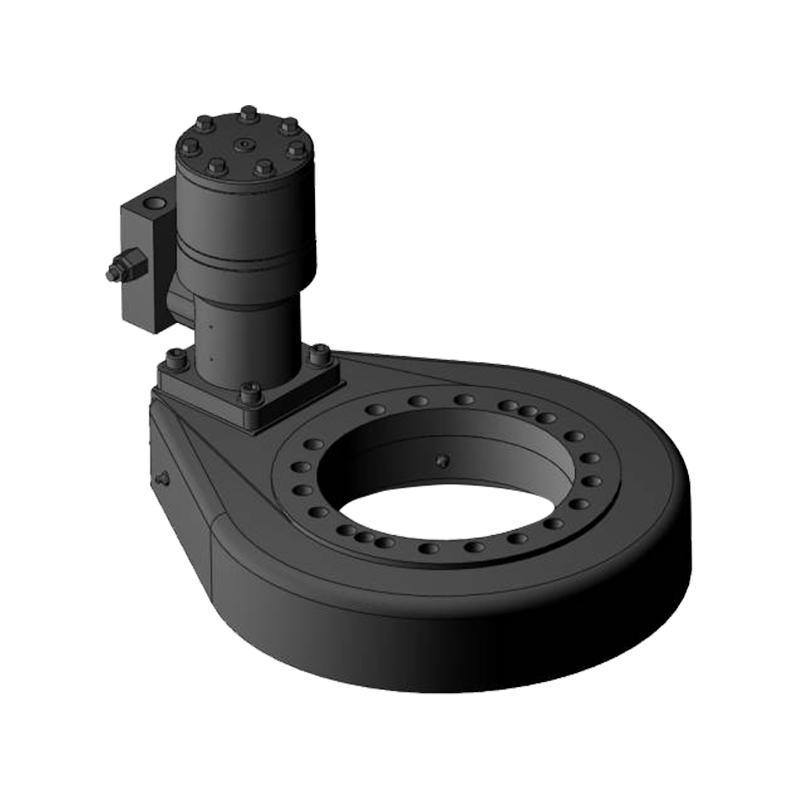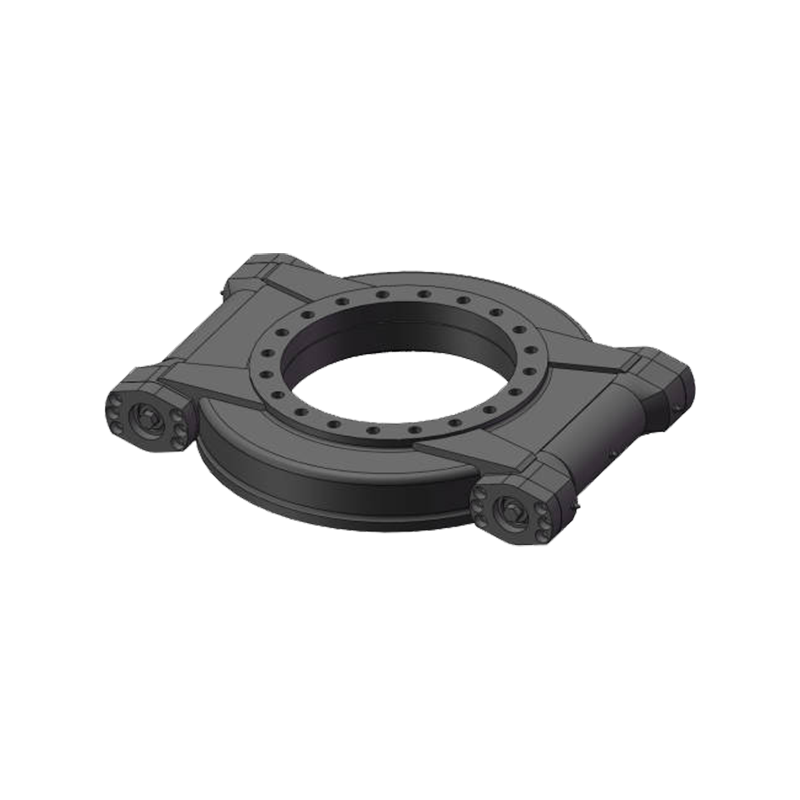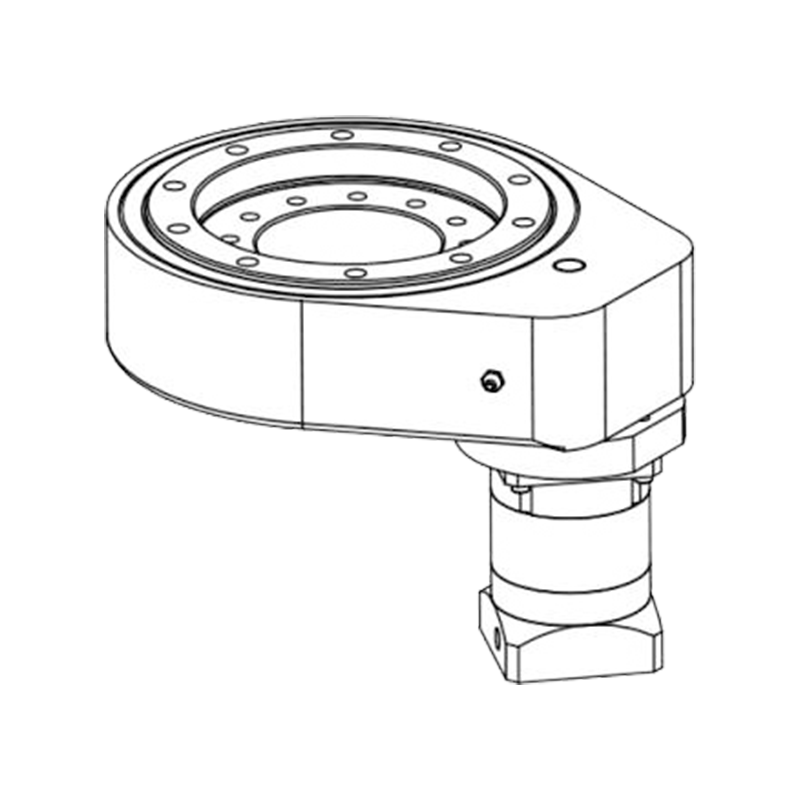Advanced Design and Application Analysis of Vertical Internal Gear Slewing Drives in High-Performance Engineering Systems
 2025.05.27
2025.05.27
 Industry news
Industry news
In the realm of high-performance engineering systems, precision, durability, and compactness are paramount. Among the various mechanical components that facilitate rotational motion under demanding conditions, vertical internal gear slewing drives have emerged as a critical solution for applications requiring high torque transmission, spatial efficiency, and multi-axis load management .
These specialized rotary drives integrate an internal ring gear with a vertically oriented pinion system, enabling them to deliver superior mechanical performance in constrained environments. Their ability to handle combined radial, axial, and overturning loads , while maintaining smooth and accurate rotation, makes them indispensable in advanced industrial, energy, and automation systems.
Structural Configuration and Mechanical Principles
A vertical internal gear slewing drive is fundamentally composed of five key subsystems:
Internal Ring Gear : Positioned coaxially within the housing, this gear engages with the driving pinion and serves as the primary torque transfer element.
Pinion Gear and Drive Motor : Typically a helical or spur gear connected to an electric motor, hydraulic actuator, or servo system, responsible for initiating rotational movement.
Bearing Assembly : Incorporates high-capacity bearings such as crossed roller bearings or four-point contact ball bearings to support complex loading conditions.
Housing and Mounting Structure : Provides structural integrity and protection against environmental contaminants; often made from cast aluminum, steel, or composite alloys.
Lubrication and Sealing System : Ensures long-term reliability through effective grease or oil distribution and contamination control.
The internal gear configuration allows for a reduced footprint compared to external gear systems, while the vertical orientation facilitates integration into machines where space constraints or gravitational considerations dominate design decisions.
Load-Bearing Capabilities and Performance Metrics
Vertical internal gear slewing drives are engineered to withstand a wide range of mechanical stresses, including:
Radial Loads : Resulting from lateral forces acting perpendicular to the axis of rotation.
Axial Loads : Arising from compressive or tensile forces along the rotational axis.
Overturning Moments (Torque) : Caused by off-center loads that induce rotational instability.
To quantify performance, engineers rely on several key metrics:
Nominal Torque Capacity (TN) : Defines the maximum continuous torque the drive can transmit without exceeding design limits.
Dynamic Load Rating (Cr) : Indicates the bearing’s capacity to sustain rotating loads over its service life.
Static Load Rating (C0r) : Reflects the maximum non-rotating load the bearing can endure before permanent deformation occurs.
Backlash Tolerance : Measures the clearance between mating gears, crucial for applications requiring positional accuracy.
Modern designs often incorporate low-backlash configurations and adjustable preloading mechanisms to enhance rigidity and minimize play, particularly in automated and robotic systems.
Material Innovations and Durability Enhancements
As industrial demands intensify—particularly in extreme environments such as offshore wind farms, desert solar fields, and aerospace platforms—the materials used in slewing drives have evolved significantly.
Gear Materials
Case-hardened steels (e.g., 16MnCr5, 20MnCr5) : Provide excellent surface hardness and core toughness.
Through-hardened steels (e.g., 42CrMo4) : Offer uniform strength for high-load applications.
Powder metallurgy and sintered alloys : Enable cost-effective manufacturing of complex gear geometries.
Surface Treatments
Carburizing and nitriding : Improve wear resistance and fatigue life.
Plasma-assisted coatings (e.g., DLC, TiN) : Reduce friction and extend service intervals.
Corrosion-resistant plating (e.g., zinc-nickel, chrome) : Essential for outdoor and marine installations.
Bearing Technologies
Hybrid ceramic bearings : Combine steel races with ceramic rolling elements for higher speed capability and reduced thermal expansion.
Polymer cages and seals : Enhance sealing performance and reduce maintenance frequency.
These advancements contribute to extended operational life, reduced downtime, and improved performance consistency across varying operating conditions.
Integration with Smart and Automated Systems
With the rise of Industry 4.0 , slewing drives are increasingly being integrated into smart mechanical systems that leverage real-time data analytics and predictive maintenance strategies.
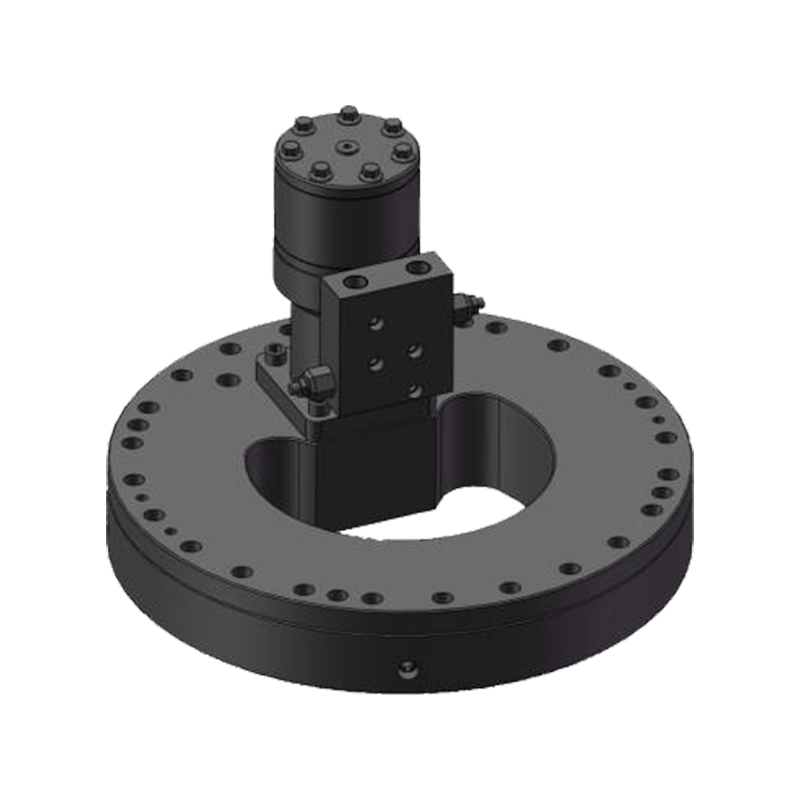
Modern vertical internal gear slewing drives may include:
Integrated encoders for precise angular positioning.
Torque and vibration sensors for condition monitoring.
CANopen, EtherCAT, or Modbus interfaces for seamless PLC communication.
IoT-enabled diagnostics modules that relay performance data to cloud-based asset management platforms.
Such integrations allow for:
Enhanced machine autonomy
Real-time performance optimization
Early detection of component degradation
Remote troubleshooting and maintenance scheduling
These features are especially valuable in wind turbines , automated guided vehicles (AGVs) , and industrial robots , where unplanned downtime can result in significant financial losses.
Key Applications Across Industries
The versatility and robustness of vertical internal gear slewing drives make them ideal for deployment in mission-critical systems across multiple industries:
Renewable Energy Sector
Solar tracking systems : Facilitate dual-axis movement of photovoltaic arrays to maximize energy capture.
Wind turbine yaw systems : Enable nacelle rotation to align with wind direction, ensuring optimal power generation.
Aerospace and Defense
Radar and antenna positioning systems : Provide precise azimuth and elevation adjustments for surveillance and communication equipment.
Missile launchers and turret stabilization platforms : Ensure rapid, accurate targeting under dynamic battlefield conditions.
Construction and Mining Equipment
Excavators and mobile cranes : Allow cab and boom rotation for improved operator visibility and maneuverability.
Drilling rigs : Support turntable rotation and directional drilling adjustments in harsh environments.
Robotics and Automation
Industrial robotic arms : Enable programmable rotational joints for flexible assembly and handling tasks.
Material handling systems : Facilitate omnidirectional rotation in conveyor and sorting applications.
Each of these domains benefits from the compact form factor, high torque density, and resilience of vertical internal gear slewing drives.
Maintenance Strategies and Lifecycle Optimization
Given the critical role these drives play in high-performance systems, proper maintenance is essential to avoid costly failures and ensure consistent operation.
Recommended practices include:
Regular inspection of gear meshing and alignment.
Lubricant analysis to detect contamination or degradation.
Seal replacement and cleaning of labyrinth structures.
Bearing condition monitoring using vibration and temperature sensors.
Additionally, many manufacturers now offer modular and semi-modular designs , allowing for selective component replacement rather than full unit overhaul—significantly reducing repair costs and machine downtime.
Sustainability Trends and Future Development
Looking ahead, several trends are shaping the next generation of vertical internal gear slewing drives:
Energy-efficient designs that minimize power consumption while maintaining performance.
Use of lightweight and recyclable materials to reduce environmental impact.
Integration with AI-driven diagnostics for smarter asset management.
Development of additive manufacturing techniques to produce complex internal geometries with minimal material waste.
Moreover, research into self-lubricating polymers , smart coatings , and adaptive preload systems could lead to drives that require less frequent servicing and exhibit longer operational lifespans.



